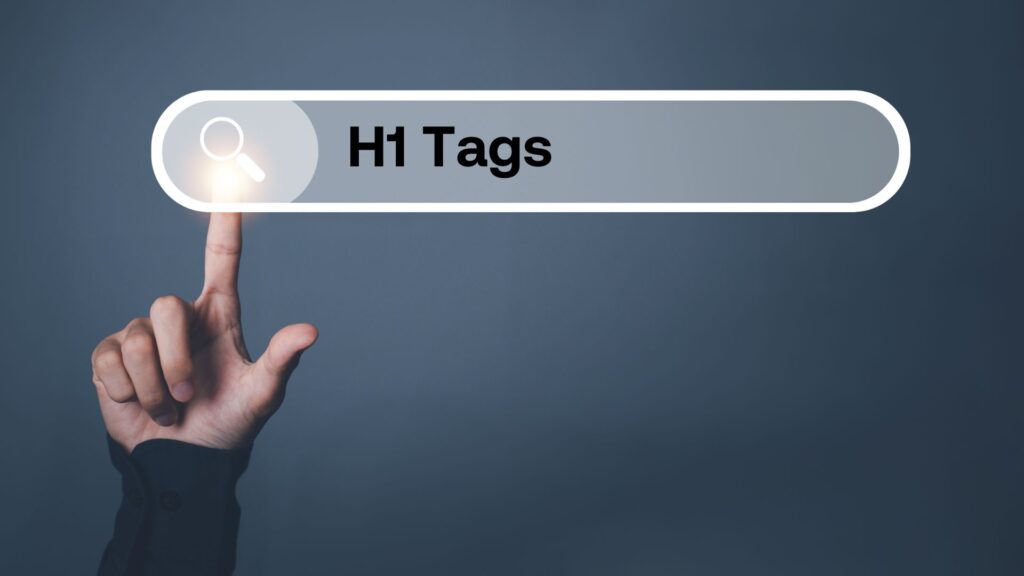Mastering H1 Tags: The Ultimate Guide to SEO Optimization
In the ever-evolving world of search engine optimization (SEO), understanding the power of H1 tags is crucial for anyone looking to boost their website’s visibility and ranking. At IncRev, we’ve seen firsthand how proper implementation of H1 tags can dramatically improve a site’s performance in search results. Let’s dive deep into the world of H1 tags and uncover their secrets for SEO success.
What is an H1 Tag?
Wondering what is an H1 tag? An H1 tag is the HTML element used to define the main heading of a webpage. It’s typically the largest and most prominent text on the page, signaling to both users and search engines what the content is primarily about. The structure of an H1 tag looks like this:
<h1>Your Main Title Goes Here</h1>While it may seem simple, the H1 tag plays a crucial role in your website’s SEO strategy and user experience.
The SEO Significance of H1 Tags
At IncRev, we’ve observed that properly optimized H1 tags can significantly impact a page’s search engine rankings. Here’s why they’re so important:
1. Clear Content Hierarchy
H1 tags establish the hierarchy of your content, helping search engines understand the structure of your page. This clarity aids in indexing and can improve your chances of ranking for relevant queries.
2. Improved User Experience
A well-crafted H1 immediately tells visitors what your page is about, enhancing user experience and potentially reducing bounce rates – factors that search engines consider when ranking pages.
3. Keyword Optimization
Including your target keyword in the H1 tag signals to search engines what your page is focusing on, potentially boosting your relevance for those search terms.
Why H1 Tag is Important for SEO
The importance of H1 tag in SEO cannot be overstated. According to Semrush’s overview of H1 importance, H1 tags contribute to content structure signals in Google’s ranking algorithm, improving topical relevance by up to 15% in user studies. This quantifiable impact demonstrates why using H1 tags for SEO should be a priority in any optimization strategy.
H1 SEO Best Practices for 2025
To maximize the SEO benefits of H1 tags, follow these IncRev-approved seo h1 tags best practices:
Use Only One H1 Per Page: Google’s Guidelines
While Google has stated that multiple H1s won’t necessarily hurt your SEO, we at IncRev recommend sticking to one H1 per page for clarity and focus. According to Moz’s guide on H1 tags, Google confirms multiple H1 tags do not harm SEO but recommends one for clear hierarchy. The one h1 per page seo google best practice ensures that both search engines and users can immediately identify your primary topic without confusion.
Make It Descriptive and Engaging
Your H1 should accurately describe the page’s content while also being compelling enough to encourage users to read on. For those searching “how to write h1 tags for seo,” focus on natural keyword placement early in the heading while maintaining readability.
Ideal H1 Length and Keyword Optimization
When considering how long should h1 be, research shows that optimal H1 length is 50-60 characters to match mobile SERP display and avoid truncation. According to Backlinko’s H1 best practices, this range ensures full visibility across devices and aligns with mobile-first indexing priorities. While you may wonder how long can h1 tag be, keeping it concise improves both user experience and search performance.
Include Your Target Keyword
Naturally incorporate your primary keyword into the H1, preferably near the beginning. This h1 tag best practices seo approach signals topical relevance without keyword stuffing.
Real-World H1 Tag Examples for SEO
Understanding h1 tag seo example use cases helps clarify best practices. Here are examples of h1 tags that demonstrate effective optimization:
| Good H1 Example | Why It Works |
|---|---|
| “Best H1 SEO Practices in 2025” | Primary keyword early, clear intent, appropriate length (34 chars) |
| “Complete Guide to Link Building Strategies” | Descriptive, engaging, includes target keyword naturally (46 chars) |
| “What is Technical SEO? Definition & Tips” | Answers search intent, keyword-rich, under 60 characters (42 chars) |
| Poor H1 Example | Why It Fails |
|---|---|
| “Welcome to Our Website” | No keyword, vague, doesn’t signal content topic |
| “The Ultimate Comprehensive Guide to Everything You Need to Know About H1 Tags” | Too long (79 chars), will truncate on mobile, keyword stuffing |
| “Click Here” | Not descriptive, no topical relevance, poor UX |
According to MarTech’s H1 tag examples, top-ranking pages consistently incorporate primary keywords early in their H1s while maintaining natural language that appeals to users.
Common H1 Tag Mistakes to Avoid
In our work at IncRev, we’ve seen clients make several common mistakes with H1 tags. Here are some pitfalls to avoid:
- Using H1 tags for styling purposes instead of for content hierarchy
- Making the H1 too similar to the title tag
- Keyword stuffing in the H1
- Neglecting to include an H1 tag at all
- Creating duplicate H1s across multiple pages
- Ignoring mobile display length limitations
H1 Tags and Mobile Optimization
With mobile-first indexing, it’s crucial to ensure your H1 tags are optimized for mobile devices. This means keeping them short enough to display properly on smaller screens and ensuring they’re styled to be easily readable on mobile devices. The h1 homepage seo approach should prioritize clear, concise headings that communicate value immediately.
How to Check and Optimize H1 Tags on Your Site
For those wondering how to check h1 tags on website pages, several free tools and methods can help you audit and optimize your H1 implementation:
Step-by-Step H1 Tag Audit Checklist
Follow this practical guide for seo check h1 optimization:
- Use browser developer tools: Right-click any page and select “Inspect” to view the HTML and locate H1 tags
- Google Search Console: Check the “Coverage” and “Enhancements” reports for HTML tag issues
- Screaming Frog: Crawl your site to identify missing, duplicate, or overly long H1 tags
- Browser extensions: Use h1 tags checker tools like “SEO Meta in 1 Click” or “HeadingsMap”
- Manual review: Visit key landing pages and confirm H1 visibility and relevance
According to this guide to writing H1s for SEO, free tools like Google Search Console and Screaming Frog can audit H1 tags for duplicates or missing elements across sites, helping you optimize h1 tag implementation efficiently.
How IncRev Can Help Optimize Your H1 Tags
At IncRev, we specialize in comprehensive SEO strategies that include optimizing every aspect of your website, including H1 tags. Our team of experts can:
- Audit your existing H1 tags and identify areas for improvement
- Craft compelling, keyword-rich H1 tags that align with search intent
- Ensure your H1 tags are properly implemented across all pages
- Monitor the performance of your H1 tags and make data-driven adjustments
By partnering with IncRev, you’re not just getting H1 tag optimization – you’re getting a holistic SEO strategy that drives real results.
Conclusion
H1 tags may seem like a small detail in the grand scheme of SEO, but they play a vital role in how search engines understand and rank your content. By following the best practices outlined in this guide and leveraging the expertise of SEO professionals like those at IncRev, you can ensure your H1 tags are working hard to boost your search engine visibility and drive more organic traffic to your site.
Frequently Asked Questions
Can I use multiple H1 tags on a single page?
While technically possible, it’s best to stick to one H1 tag per page to maintain a clear content hierarchy and focus. Google multiple h1 tags seo best practice suggests that while multiple H1s won’t harm your SEO, using one provides clearer topical signals.
How long should my H1 tag be?
Aim for 50-60 characters to ensure it’s fully visible and impactful across all devices, especially mobile. This optimal length prevents truncation in mobile SERPs and maintains readability.
Should my H1 tag be exactly the same as my title tag?
While they should be similar, it’s better to have some variation to avoid duplicate content issues and provide additional context. Your title tag can be slightly longer and more descriptive for search results.
Do H1 tags directly impact SEO rankings?
While not a direct ranking factor, well-optimized H1 tags contribute to overall SEO performance by improving content structure and user experience. Studies show they can improve topical relevance by up to 15%.
How can I check if my H1 tags are optimized correctly?
Use SEO tools like Screaming Frog, Google Search Console, or browser extensions to audit your H1 tags. You can also consult with experts like IncRev to ensure they’re following best practices and check h1 tags on website pages systematically.
What is the difference between H1 and other heading tags?
The H1 is the main heading that defines the primary topic of your page, while H2, H3, and other heading tags create subheadings that organize content hierarchically beneath the H1.
Should every page on my website have an H1 tag?
Yes, every page should have exactly one H1 tag that clearly describes the page’s main topic. This applies to homepages, product pages, blog posts, and all other page types.
Can I optimize my H1 tag after my page is already published?
Absolutely. You can update and optimize h1 tag elements at any time. In fact, regular audits and updates based on performance data are part of ongoing SEO best practices.


